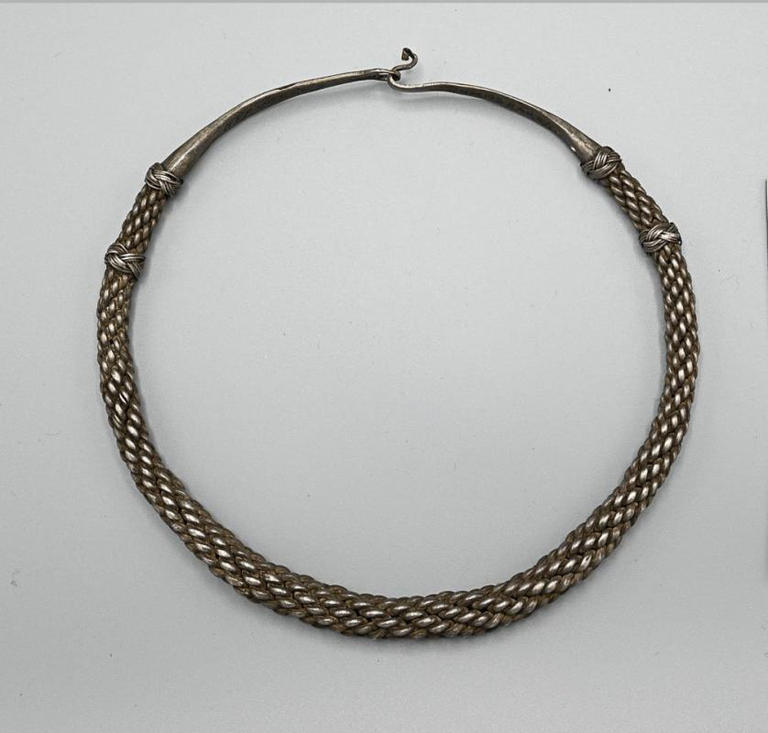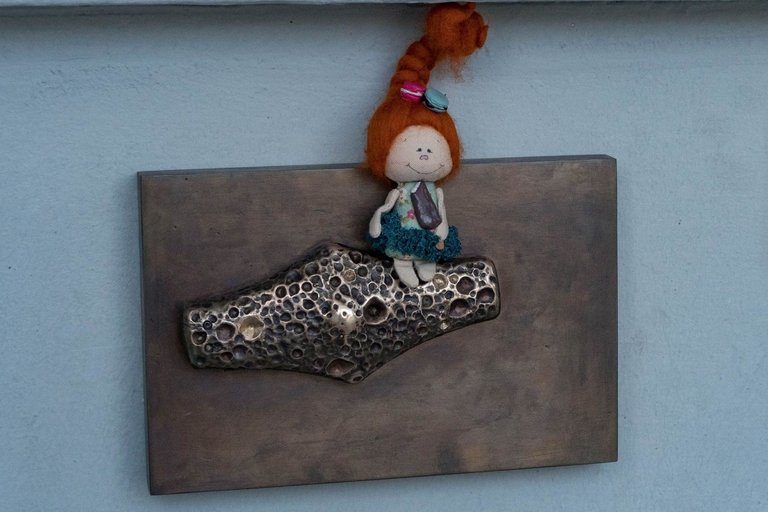
Look what Sonia has found - another bronze mini-sculpture. This time it is ... Any guesses what is this lumpy ... rhombus?
A few words about the location. This is a historical area, the heart of the ancient Kyiv. According to the legend, the founders of Kyiv were three brothers Kiy, Schek, Horyv and their sister Lybid. Three brothers settled on three hills. This is one of them called Starokyivska Gora or Upper Town. A picturesque place with a beautiful view is very popular amongst both locals and the guests of the capital.
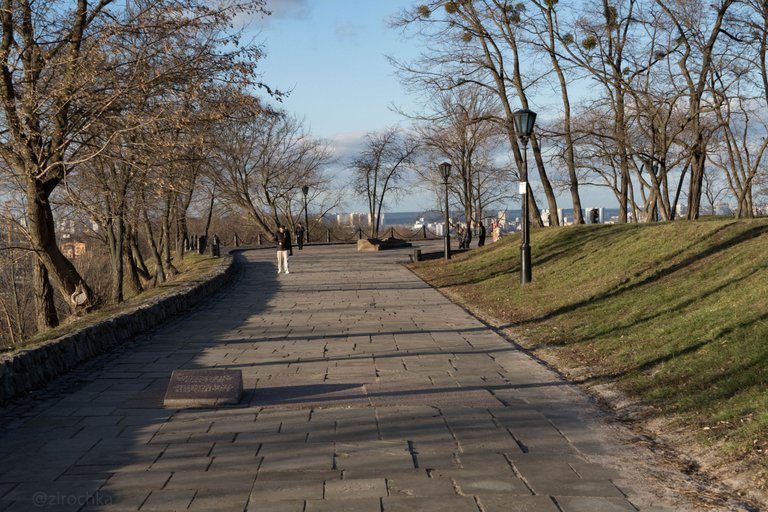
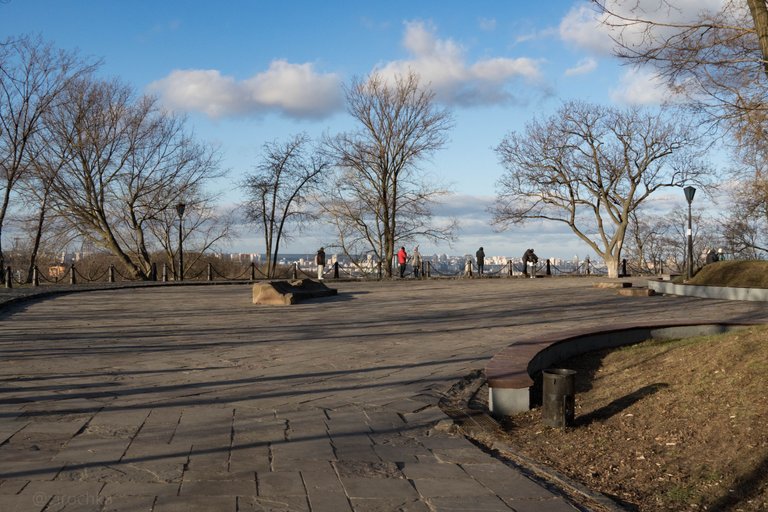 |  |
|---|
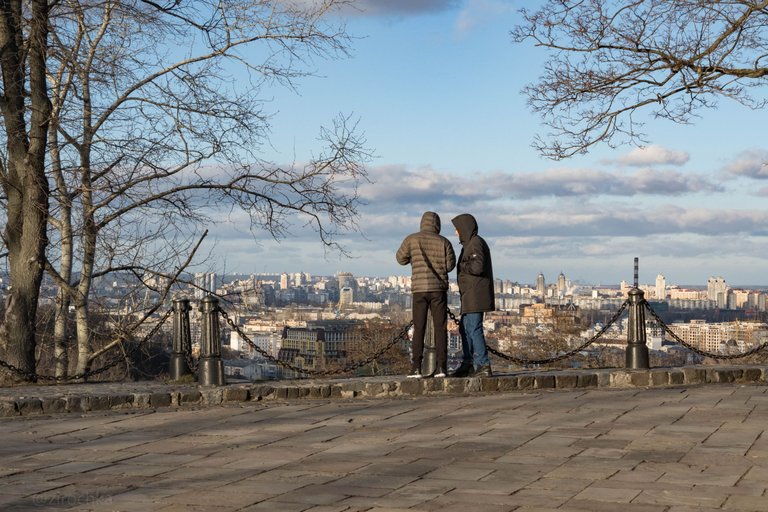

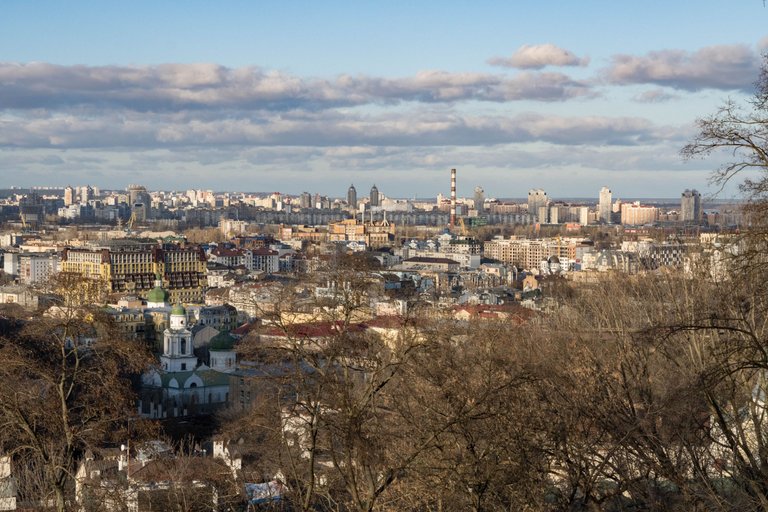
Just a few historical sites are in this small area. St Andrew's Church which is also one of the best viewpoints of Kyiv. The Church of the Tithes (Desiatynna Tserkva) or rather its foundation. Originally it was built between 989 and 996 by the order of Grand Prince Volodymyr the Great (the one who baptized the Kyivan Rus). This church is considered the first stone church of Kyivan Rus. The Linden tree, which is approximately 400 years old grows next to the foundation of the church.
 | 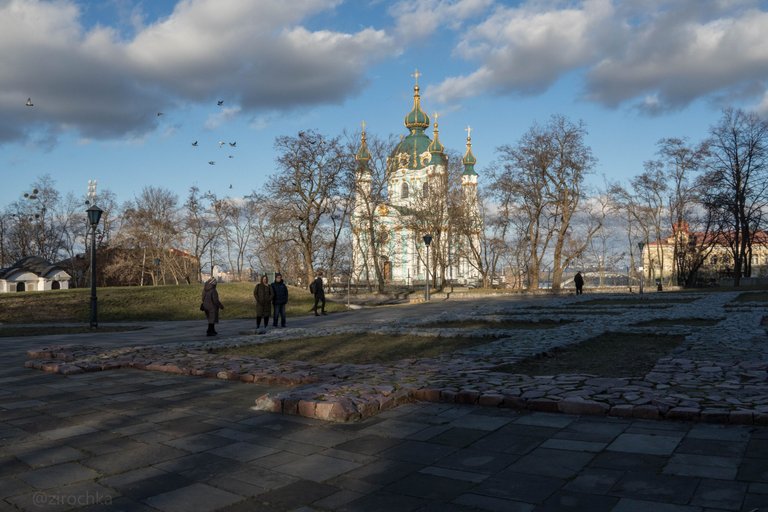 |
|---|
The National Museum of the History of Ukraine is also here, and it is highly recommended to visit! Here we are, the mini-sculpture is on the wall of it at the main entrance.
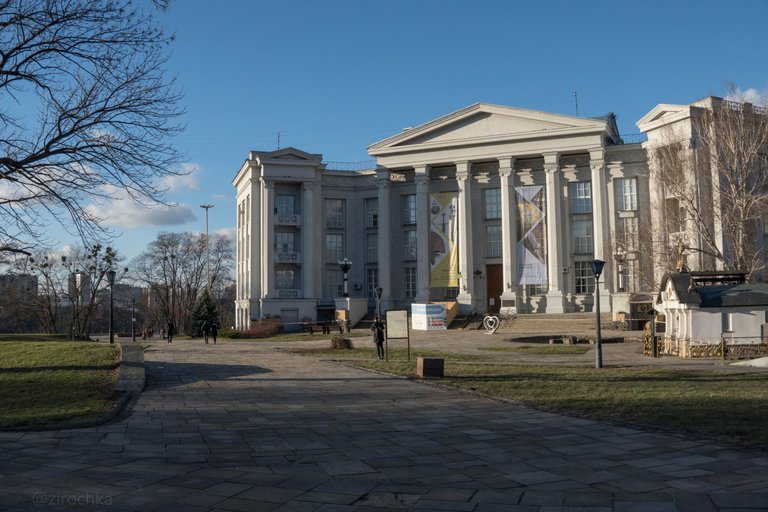
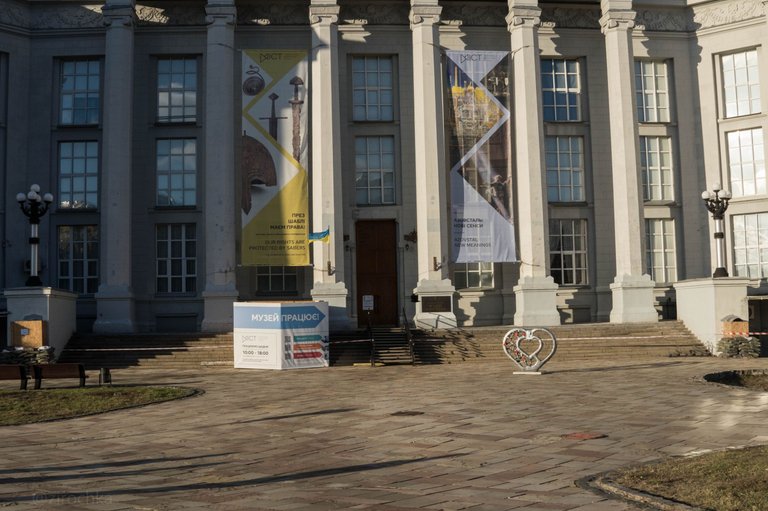 | 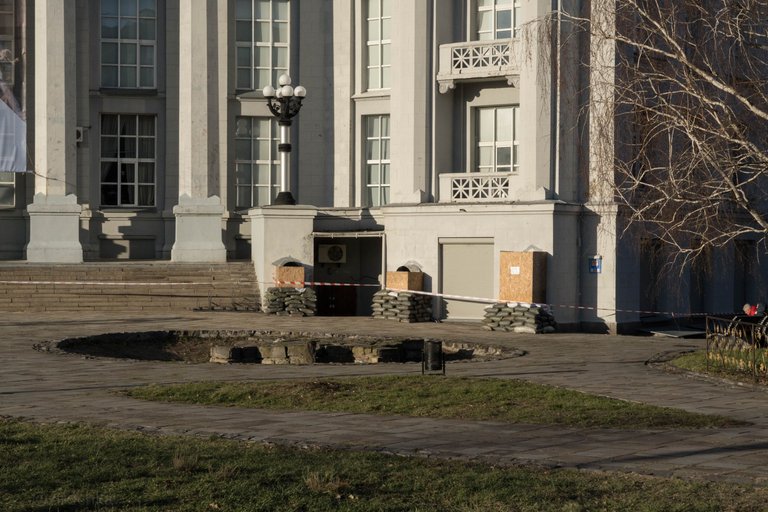 |
|---|
So what is it? I gave you a clue in the title. 😉 This is Kyiv Hryvnia - the predecessor of Ukrainian official currency Hryvnia.🤑 Which letter currency code is UAH, the digital currency code is 980, and the graphic symbol is ₴.
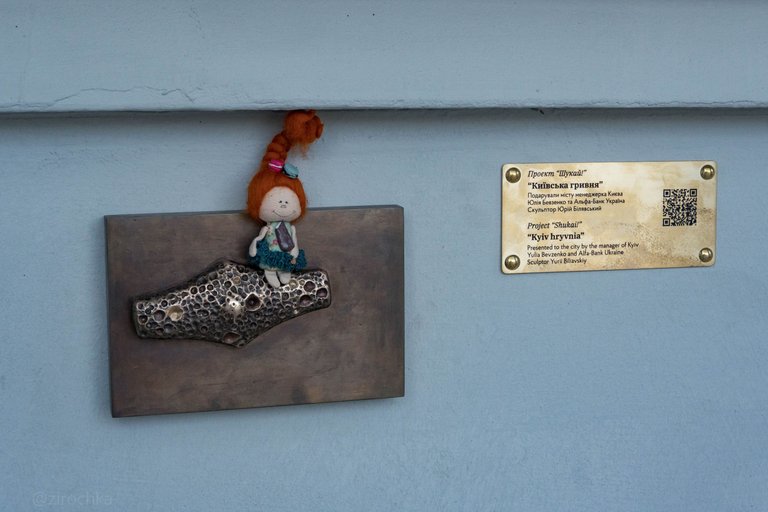
Sonia immediately asked me what the currency has to do with this stuff. This is a good question, and here is the story.

Sonia is too young but you might hear that "diamonds are a girl's best friend".😊 Nowadays we buy jewelry for money. In ancient times of Rus (Kievan Rus), there was a type of jewelry that wealthy people wore around the neck. It had the name HRYVNA in Old Slavic language. And it could serve them as money. Over the years, this jewelry gave its name to diamond-shaped "coins"! 💎
The jewelry had the form of a hoop made of gold or silver plates fastened with wire, usually of round shape.
In those days, the hryvnia was a measure of weight. They weighed silver in ingots, silver jewelry, or scraps. Later it became a counting unit. Even later, silver bars of standard shape and weight became coins. They were not round, but diamond-shaped and weighed approximately 150-160 grams. First, they were found in Kyiv, and so they are called Kyiv Hryvnia.
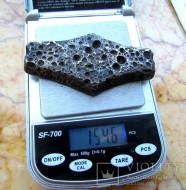 | 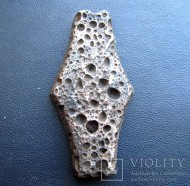 |
|---|
These diamond-shaped coins were made as follows. Molten metal was poured into a very hot mold. When the metal solidified, its bottom was smooth and its top was bubbled.
| BTW, this is the logo of the National Bank of Ukraine |  |
|---|
One of the first finds of these silver ingots took place in 1635 during the restoration of the Tithe Church I mentioned above. Unfortunately, no reliable evidence has survived since that time. The first documented find of hexagonal silver ingots in Kyiv dates back to 1826-1828.
Hryvnias could be used for significant financial or trade payments. Hryvnias could be used to buy expensive goods: land, property, livestock. For example, a horse cost 2-3 hryvnias in medieval Kyiv, and a war horse - 4-5 hryvnias, i.e. more than half a kilogram of silver.
Silver ingots in the form of sticks were also used in other regions of Rus, as well as in medieval Lithuania, Czech, and Poland.
The Russian ruble is a direct descendant of the hryvnia. The word from which the word ruble is derived means to chop. That is, a ruble is namely a chopped hryvnia. The Russian word that means "money" ([den'gi]) originates from the Turkic word "tenga", which also means "money". And the Ukrainian word "money" ([groshi]) is from the Czech "groša".😁
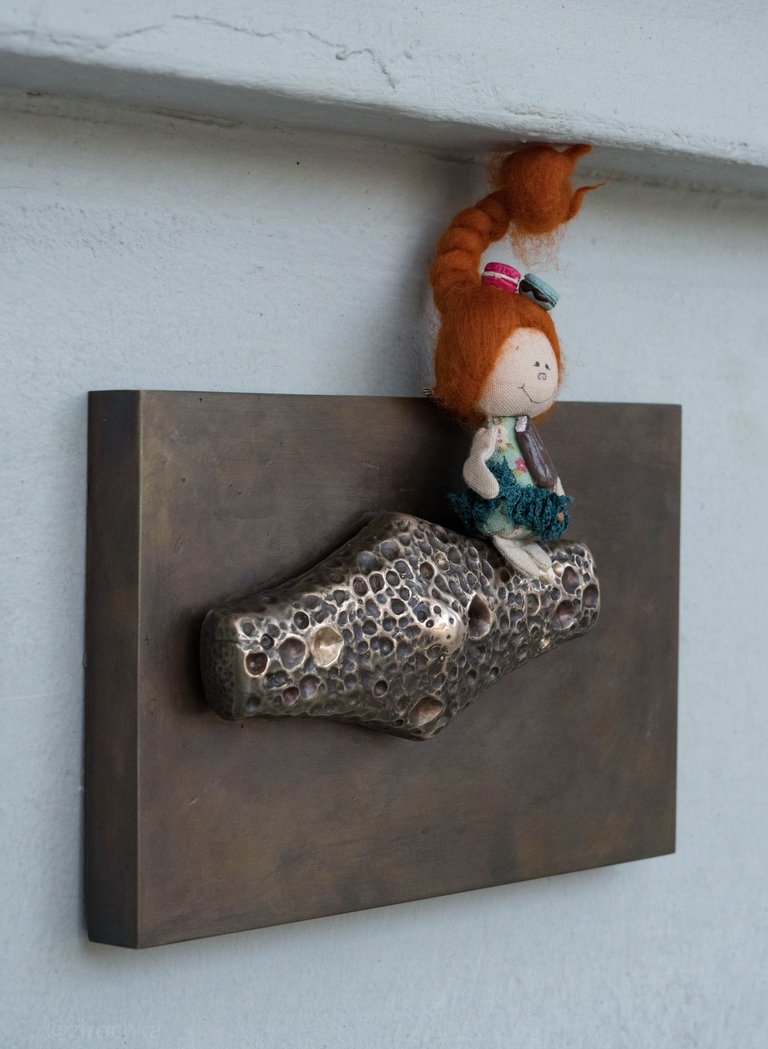
The first hryvnias
With Ukraine gaining independence, the creation of a national monetary system was extremely important. First, the National Bank introduced reusable coupons, later Ukrainian karbovanets. Finally, in September 1996, the hryvnia became the only currency. Hryvnia Day in Ukraine is celebrated on September 2.
First hryvnia banknotes were printed in Canada and UK. Banknotes in denominations of 1, 2, 5, 10 and 20 hryvnias were printed by the "Canadian Bank Note Company". And denominations of 50, 100 and 200 hryvnias - the English company "Thomas De La Rue". They were brought to Ukraine in three stages: in 1992, 1993 and 1995.
Previously, Ukraine did not have its own production facilities, so the first batch of Ukrainian hryvnia banknotes was printed only in 1994, when the first printing line of the Banknote Factory was launched in Malyn near Kyiv. Fortunately, this factory was not damaged when Russian troops tried to surround and capture Kyiv in February and March 2022.
Interesting facts
The wear resistance of paper banknotes is measured by the number of double folds. This indicator is 4 thousand.
Popular banknotes live less than a year. The coin serves up to 20 years.
It takes about a month to make a banknote.

This is all for now.
List of the sources used in this post: [1] [2] [3] [4] [5] [6] [7]
Was it interesting? Hope so. 🙂 You can find posts about Sonia's search for the mini sculptures - all in one place. I combined them in the Currated Collection.
Thank you for stopping by, have a good weekend and ...
meet you at the next mini-sculpture 😉
